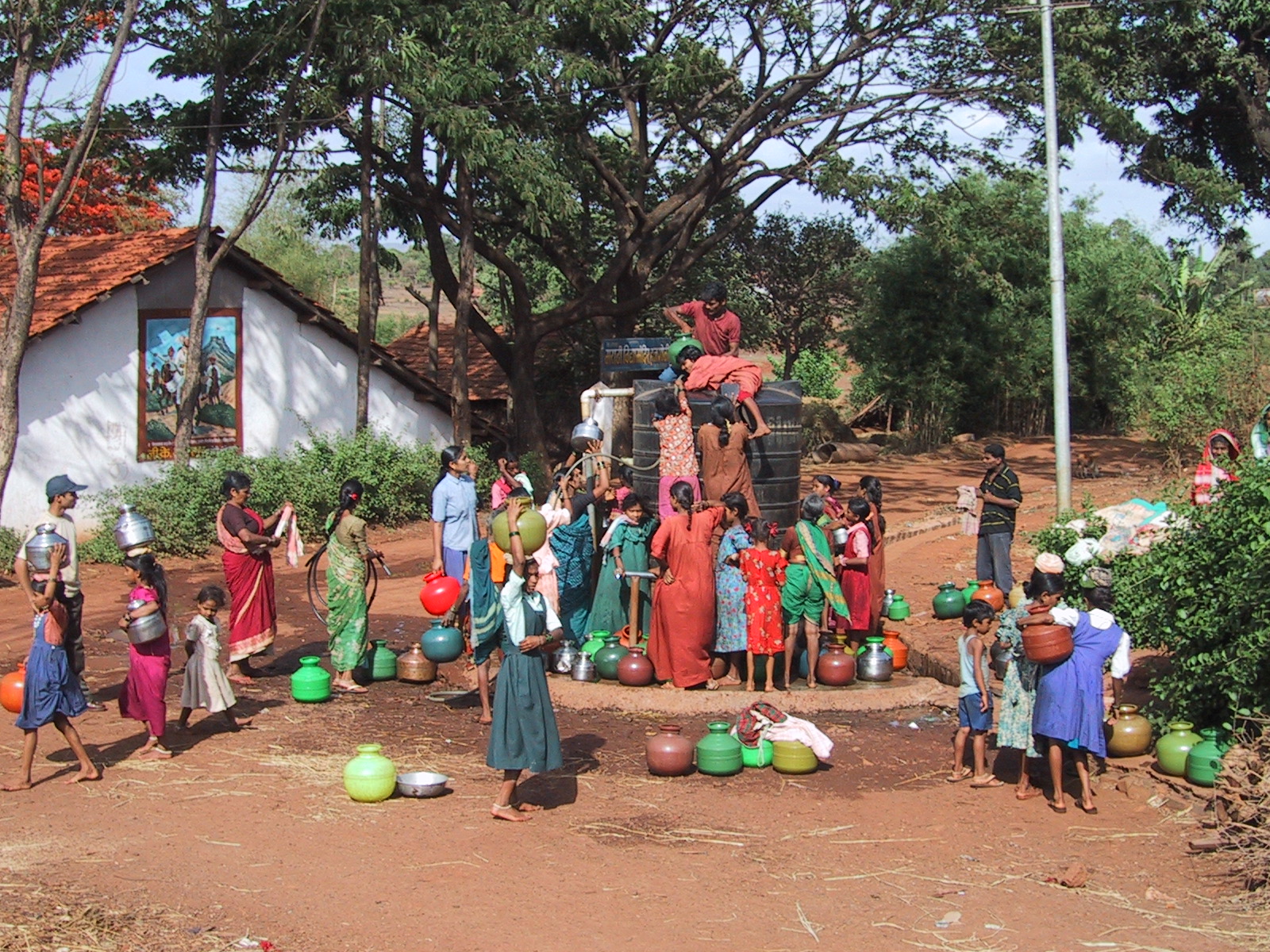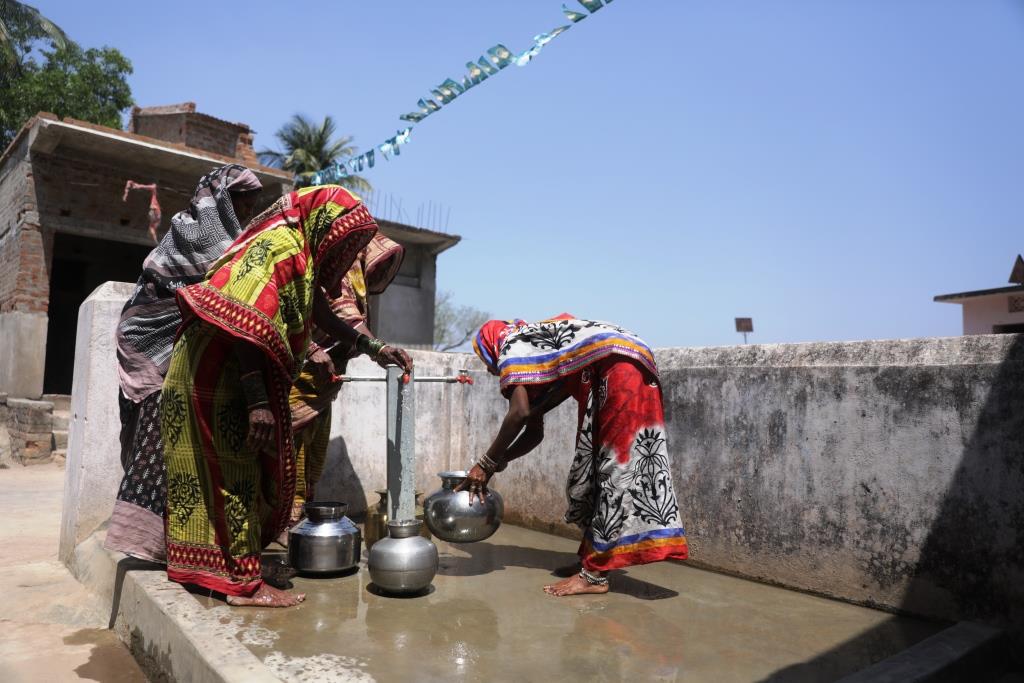Water scarcity is one of the most pressing problems in current times and the world is already witnessing its devastating effects. The situation is even more worrisome in India, given the fact that the country comprises 18% of world’s population but only 4% of world water resources; and has agriculture as one of the most important contributors to the economy.
A report by NITI Aayog, published in 2018, mentions that about 600 million people in India are facing high to extreme water stress. It is ironical that a country known for its lakes and rivers, has nearly half of its population struggling with this issue.
Surprising as it may seem, India is still water surplus. According to the Central Water Commission, our country needs a maximum of 3,000 billion cubic meters of water annually, while it receives 4,000 billion cubic meters of rain. Clearly it is the mismanagement of the water and its inequitable distribution that is causing the scarcity.
NITI Aayog report also mentions 75% households lacking drinking water access in the premises while 84% rural households still do not have piped water supply. Water supply is mostly skewed – favouring the urban masses and leaving the rural sections behind. Moreover, in the rural areas, the privileged and rich farmers practice indiscriminate groundwater extraction, while the poor households struggle even for potable water. Modernization of agriculture, rising population and growing industrialization clubbed with climate uncertainties further make the situation more complex.
It is evident that water conservation and management is driven by numerous stakeholders at micro- and macro-levels. Therefore, it’s imperative to design a multi-stakeholder collaborative that ensures sustainable water management contributing to national and international climate change goals.

Water governance and beyond
When talking about the need for collective action for water management, water governance becomes an essential part of the roadmap. Good governance brings coordination between the social, economic, political and administrative systems that influence the use and management of water. It works towards fair allocation of water resources to all stakeholders, thereby boosting sustainable and equitable growth.
Despite the fact that good water governance can have a profound impact on rural lives and livelihoods, there are several challenges in its effective implementation. Duplication of roles, unclear polices and the lack of expertise and funds, are some of the reasons. However, one of the most prominent roadblocks is the active participation of the end-users in the execution and decision making process.
Water stewardship, with its inclusive approach, helps overcome these challenges while embracing the positives of good water governance. Water stewardship is a collaborative and multi-stakeholder approach that aims to build ownership in water management programs through collective actions – benefitting people and nature.
In other words, water stewardship is a step beyond good governance that not only ensures quality management and distribution of water, but also builds climate resilient communities.
Water Stewardship Initiative by WOTR
WOTR (Watershed Organisation Trust) has been working for 3 decades in designing and developing systems to protect and nurture the water resources. During this journey, while working closely with the rural communities, we realised that increasing water availability alone will not resolve the long-term challenge. Rather, it is imperative to give equal focus to enable people make use of available water in a judicious manner.
With climate change posing new threats to the natural ecosystems, we needed to give urgent attention to sustainable water management and agriculture. WOTR witnessed an increase in the groundwater table through its ecosystem restoration intervention. This led us to initiate the Climate Change Adaptation project, with an important component of Water Stewardship, along with groundwater governance and climate-resilient agriculture overlaying watershed development.
For establishment of an effective, efficient and transparent governance mechanism, WOTR and WOTR’s Centre for Resilience Studies (W-CReS) launched the Water Stewardship Initiative (WSI) and piloted it in 100 rain-fed villages of Maharashtra. The initiative helped to sensitize communities about the cause of their fragile water health status, develop pedagogy to nudge them towards more efficient water harvesting and water use practices and evolve a set of norms and regulations to manage water sustainably.
WSI integrates the climate-smart approach to water usage in rural areas so that our communities, along with other stakeholders, actively participate in the process and develop resilience against the rapid changes in climatic patterns. Under WSI, we strategically shift our focus to strengthen the demand side rather than the supply side of water ecosystem.

Trans-disciplinary, multi-stakeholder platform
WOTR’s WSI aims to bring together multiple stakeholders in the water ecosystem to a common participative platform where they can share knowledge and contribute to a common goal.
The stakeholders are divided into three categories. WSI promotes regular interaction between stakeholders through knowledge sharing sessions, formal and informal discussions and dialogues, group exercises, planning & review meetings.
Primary stakeholders: All people in the village who directly use water for domestic, livelihoods and commercial needs. This includes integrated farmers, rain-fed farmers, women, landless households, artisans, livestock owners and commercial water users.
Secondary stakeholders: Comprises of people in the neighbouring villages whose water use is affected by primary users. This includes water users in the upstream/downstream or those sharing the same aquifer.
Tertiary stakeholders: Are all the policymakers, local administration, experts, donor agencies and practitioners. Their decisions, supports and inputs influence and impact water availability in villages.
Here are the prominent features and functions of the Water Stewardship Initiative:
- Develop a systematic understanding of water resources, its base and impacts of action
- Common ownership and responsibilities amongst participants
- Income of households prioritized
- Water resources considered a public trust
- Governance by empowered and inclusive body
- Water prioritize for domestic and livestock needs
- Adaptation plans implemented for livelihoods
The Water Stewardship Initiative focuses on the co-production of knowledge for behavioural and institutional change towards building the communities’ understanding and capacity to effectively face varying weather conditions as well as address equity in access to water. It thus aligns firmly with the goal and objectives of the central government’s Atal Bhujal Yojana to demonstrate community-led, sustainable groundwater management which can be scaled up. The WSI also concords with various state acts such as the Maharashtra Groundwater (Development and Management) Act 2009, to ensure sustainable, equitable and adequate supply of groundwater of prescribed quality, for various categories of users, through supply and demand management measures.
The collective action – roles and responsibilities
The efficacy of WSI model rests on the robust foundation of local institutions and community representatives. The Jal Sevak/Sevika and the Village Water Management Team (VWMT) contribute significantly in the process.
Jal Sevaks and Sevikas are the local rural youth, men and village spearheading the WSI projects. While Jal Sevaks work in their own villages and a couple of other neighbouring villages, Sevikas work in their respective villages. Their primary responsibility is to create awareness, mobilize the villagers for water stewardship, and assist the VWMT to ensure fair representation of different stakeholders. Jal Sevaks and Sevikas also collect data, maintain records and coordinate with gram panchayat and VWMT for systematic execution of the plan.
VWMT, on the other hand, include representatives from all the stakeholder groups. This team is responsible for preparation and execution of water stewardship plan in the village. With the help of Jal Sevaks and Sevikas, the VWMT ensure participation from villagers and other stakeholder groups. The team also approaches the government departments, NGOs, corporate donors and other funding agencies for their support.
Key Components of WSI
Village selection and institution building
The priority is set according village-wise urgency of water and the willingness of people to work together. Thereafter, the focus is on building local institutions to ensure the acceptance, support and participation of all households in the village. Jal Sevaks and Jal Sevikas play a crucial role in this process.
Capacity building
Capacity building of our community representatives – the Jal Sevaks and Jal Sevikas is one of the most crucial steps in the WSI model. WOTR conducts training programs, workshops and exposure visits on a regular basis to help them achieve conceptual clarity about water management. During these events, the Jal Sevaks and Sevikas also share their experiences and learn from each other.
Stakeholder engagement
Successful implementation of WSI can only be achieved with the acceptance and active participation of all stakeholders (primary, secondary and tertiary). WOTR encourage dialogues between the stakeholders to build ownership and create a sense of teamwork. The process also helps avoid conflicts and clash of interest and promotes better decision making.
Water Stewardship Plan
The final outcome of the Water Stewardship Initiative is to build self-dependent communities who can take forward the projects even after the facilitating agency withdraws its support. The main actors in implementing Water Stewardship Plan are the Jal Sevaks/Sevikas and the Village Water Management Teams.
Five major components of the Village Water Stewardship Plan are:
- Village Health Chart
- Water Budget and Crop Plan
- Water Harvesting Plan
- Water-use Efficiency Plan
- Establishment of Social Rules/Norms

The results speak for themselves!
The outcome of implementing WSI has been highly encouraging. The initiative, implemented in 100 rain-dependent villages of Maharashtra has resulted in increased awareness of water status amongst local people and has also significantly improved coordination and trust amongst various stakeholders. Water stewards and the local institutions have been the key participants in this journey of transformation – as it happened in Kolegaon village of Maharashtra.
People of Kolegaon, located in Bokhardan block of Jalna district in Maharashtra, had been facing abysmally low rains since a few years. With the implementation of WSI, Bhagwat one of the locals was selected as Jal Sewak for the village. He closely worked with the VWMT to implement the WSI plan and promote water stewardship among villagers.
During the first stakeholder engagement meeting, Bhagwat guided the participants to do water health assessment. The exercise was an eye opener as the water health of Kolegaon was not great and the villagers had to depend on water tankers for domestic needs, especially during the summer season.
This was the starting point for Kolegaon to embrace WSI. Bhagwat, in close coordination with the VWMT, gave handholding support to villagers in water budgeting and water harvesting and water saving. Farmers were given special attention during knowledge sessions where they were exposed to various crop and water management practices.
Right from the implementation, Bhagwat effectively monitored and managed the water table and rainfall data that helped review the progress of the initiative.
Over a period of 5 years, the water health of Kolgaon improved remarkably with 35.63 cr. litres of additional water harvested in 2021. The number of farmers using micro-irrigation increased from 80 in 2016 to 238 in 2021. Today, 80% irrigated area in the village is under micro-irrigation and farmers are using climate-smart techniques in agriculture to make judicious use of water throughout the year.
WSI – the present and future of sustainable water management
There are several other success stories like Kolegaon where WSI has led to tremendous improvement in the water health of the area. The comprehensive and practical approach of water stewardship is not only simple to adopt but also sustainable. The individual and collective actions under WSI benefit both people and nature. It is a promising approach that prepares us to deal our water future with confidence and responsibility.





